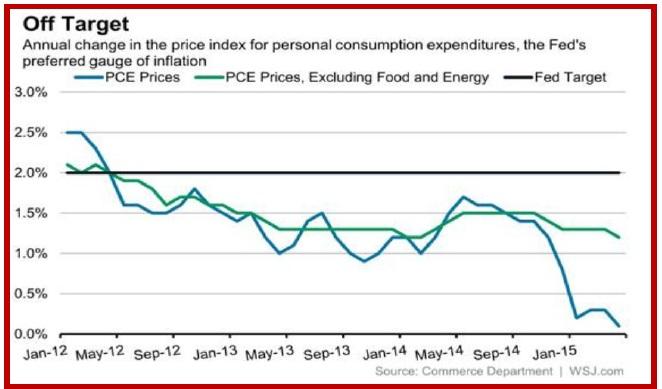Outlook:
The seeming resumption of the euro pullback to the upside is not really a surprise. It was always a realistic possibility, although we would be more comfortable having a hard, cold reason for it. The only explanation we have found--a rise in Bund yields—would be okay if the spread were not at the same time widening in the US’ favor. Theory has it that it’s the spread that counts. And why is the Bund yield rising in the first place? Yields rise when prices fall, implying some factor is driving safe-haven seekers out. Maybe a deal with Greece is realistic, after all. In a data-overload week, today in the US we get auto sales, Redbook chain store sales and factory orders, of which auto sales speak to consumer confidence and factory orders speak (maybe) to rising employment and exports.
But we want to think about inflation. The personal consumption expenditures price index rose 0.1% y/y in April, the lowest since Oct 2009 and less than 0.3% in both Feb and March. The PCE price index is reportedly what the Fed prefers to look at, and it ain’t good. The WSJ notes that “April 2012 was the last time the inflation rate was on target. That’s the longest such stretch of sub-2% inflation since the 1960s.”
And core inflation, ex energy and food, was up 1.2% y/y in April—but 1.3% in the earlier four months. Economists like Ian Shepherdson tell us not to worry about it—the tight labor market means future inflation is in the cards. “It won’t be current inflation that prompts the first Fed hikes, it will be the tightness of the labor market and the signal it sends about future inflation risk, given the extraordinarily easy stance of policy.”
But see the chart below. Does this look like a rate hike to you?
Not to Boston Fed Pres Rosengren. He’s a non-voter but worries that the lousy Q1 performance means conditions are not close to being right for a hike. Rosengren was talking about GDP at -0.7%, but the hipbone is connected to the thigh-bone. Slow growth means price pressure is soft. Maybe the Q1 result was due to temporary factors like the weather and port strike, but maybe it’s “a reflection of broader changes in the economy.” Rosengren said “…an appropriately data-dependent monetary policy requires confirmation in the numbers, not just in forecasts of better times.” Besides, the Fed has no wiggle room to retreat if a new shock comes along, including a shock from foreign shores, Europe or China.
Delay past September is starting to look realistic.
Right now the action is pro-euro, not anti-dollar, except for the base-case anti-dollar sentiment that has pervaded the FX market for decades. But even though we still have the divergent monetary policy scenario that has the dollar the beneficiary of rising rates while everyone else is in QE, it’s looking a little threadbare just now.
It’s also not working, at least not today. As we have written all too many times before, the yield spread has to give the dollar a fat premium to overcome anti-dollar bias, probably 250 bp. If the Bund yield rises, it’s safe for the dollar only if that cushion has been built in. And it’s not getting built in. This is pretty scary. Right now, it looks like the euro can continue to rally to the previous intermediate high, 1.1208 from May 22. This is beyond the breakout bar mid-point but would still allow the bigger dollar rally to exist. Beyond the 1.208 level, we would have to re-think what’s going on.
This morning FX briefing is an information service, not a trading system. All trade recommendations are included in the afternoon report.
Recommended Content
Editors’ Picks
EUR/USD flirts with daily tops near 1.0730

The continuation of the selling pressure in the Greenback now lends further oxygen to the risk complex, encouraging EUR/USD to revisit the area of daily highs near 1.0730.
USD/JPY looks stable around 156.50 as suspicious intervention lingers

USD/JPY remains well on the defensive in the mid-156.00s albeit off daily lows, as market participants continue to digest the still-unconfirmed FX intervention by the Japanese MoF earlier in the Asian session.
Gold holds steady above $2,330 to start the week

Gold fluctuates in a relatively tight channel above $2,330 on Monday. The benchmark 10-year US Treasury bond yield corrects lower and helps XAU/USD limit its losses ahead of this week's key Fed policy meeting.
Week Ahead: Bitcoin could surprise investors this week Premium

Two main macroeconomic events this week could attempt to sway the crypto markets. Bitcoin (BTC), which showed strength last week, has slipped into a short-term consolidation.
Five Fundamentals for the week: Fed fears, Nonfarm Payrolls, Middle East promise an explosive week Premium

Higher inflation is set to push Fed Chair Powell and his colleagues to a hawkish decision. Nonfarm Payrolls are set to rock markets, but the ISM Services PMI released immediately afterward could steal the show.
